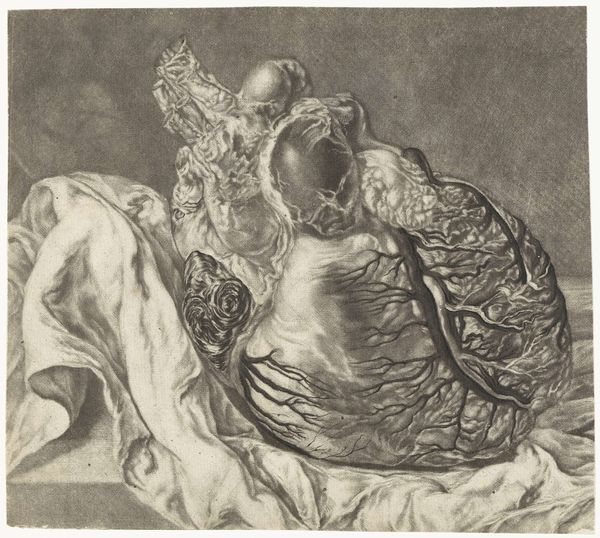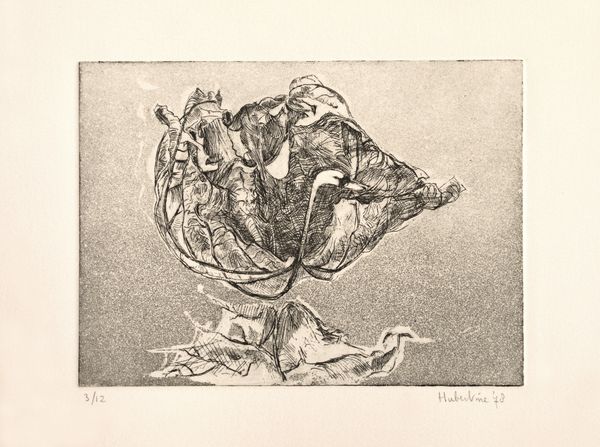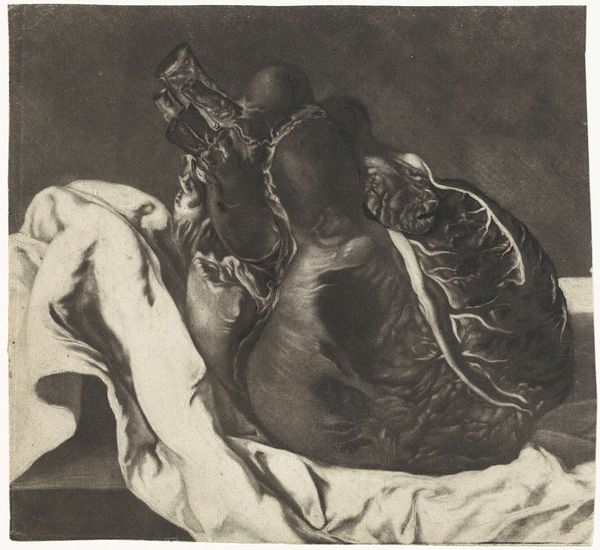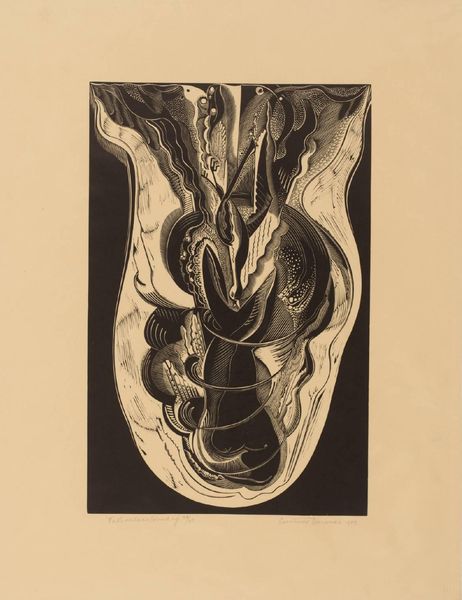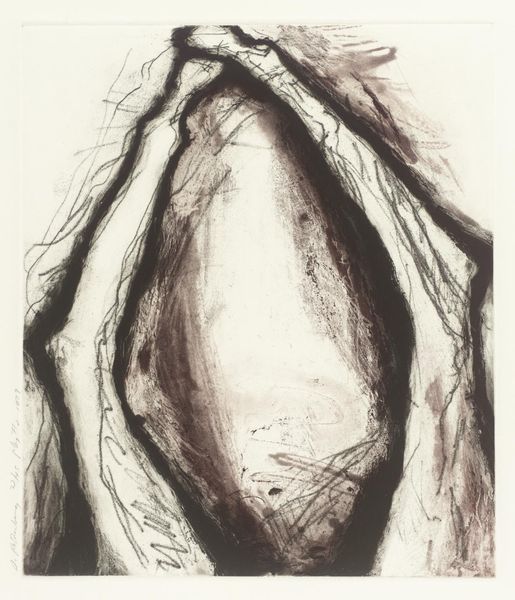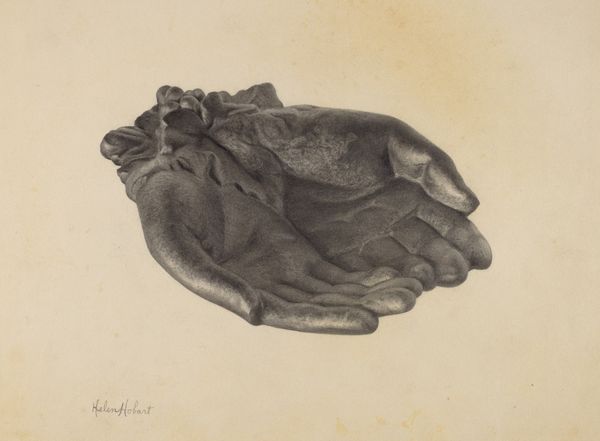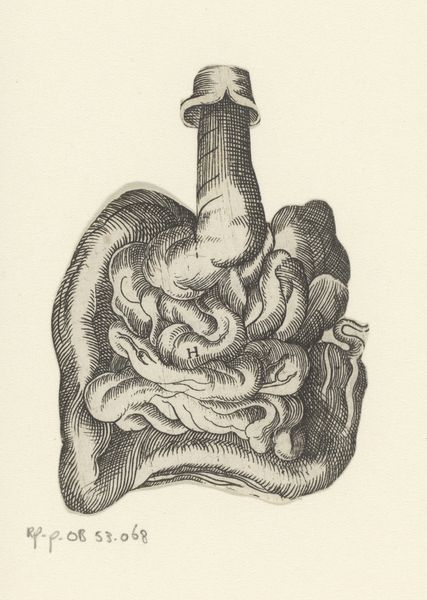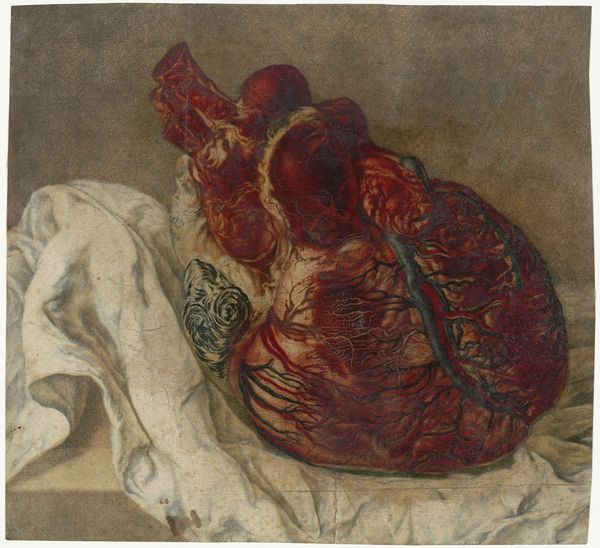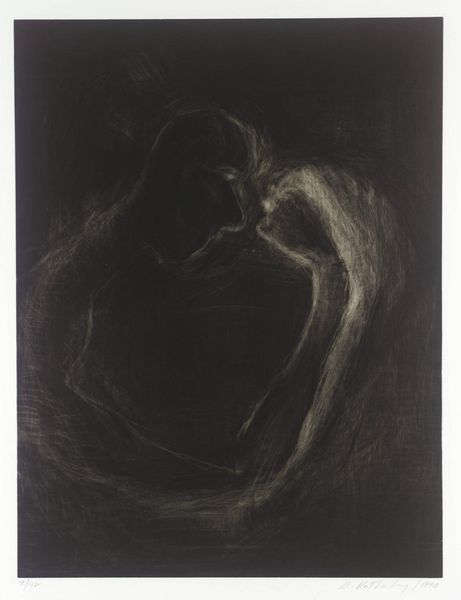
print, etching, engraving
# print
#
etching
#
charcoal drawing
#
figuration
#
vanitas
#
history-painting
#
academic-art
#
engraving
#
realism
Dimensions: height 200 mm, width 203 mm
Copyright: Rijks Museum: Open Domain
Editor: This etching, "Prints of the Brain and the Heart," created between 1700 and 1750 by Jan l’ Admiral, strikes me as strangely morbid, yet also scientifically curious. What underlying symbolism can we unearth here? Curator: Indeed! Notice how the artist has presented these organs. Not as simple anatomical studies, but almost as relics, wouldn’t you agree? The heart and brain, the supposed seats of emotion and reason, rendered in a way that hints at mortality, at vanitas. Editor: Vanitas... the transience of life? Is it a sort of memento mori? Curator: Precisely! Consider how the era shaped these symbols. In a time when scientific discovery was burgeoning alongside persistent religious beliefs, these images spoke to both the wonders and the limitations of human understanding. Look at the textures; almost reverentially detailed. Editor: It’s like they’re trying to capture the very essence of what it means to be human, broken down into physical parts. Are there similar symbolic representations used elsewhere? Curator: Think about the prevalence of skulls in art throughout history. Here, Admiral substitutes those obvious symbols for the organs themselves. By doing so, is he perhaps suggesting a deeper, more internal contemplation of mortality? A kind of interior vanitas? Editor: Wow, I hadn't considered that interpretation. It certainly gives me a lot to think about! Curator: It's fascinating how potent symbols evolve over time, isn’t it? These prints serve as a powerful reminder that visual culture holds complex reflections of our evolving understanding of ourselves and our place in the world.
Comments
rijksmuseum about 2 years ago
⋮
Around 1735 Jan l’Admiral printed several remarkable anatomical prints in colour, among others on commission for the celebrated physician Frederik Ruysch. For his illustrations of the cerebral membrane (the skull of an unborn child) and a human heart he experimented with ever different colours, and made various versions of them. The objective was to provide medical practitioners with the most precise and realistic images possible.
Join the conversation
Join millions of artists and users on Artera today and experience the ultimate creative platform.
